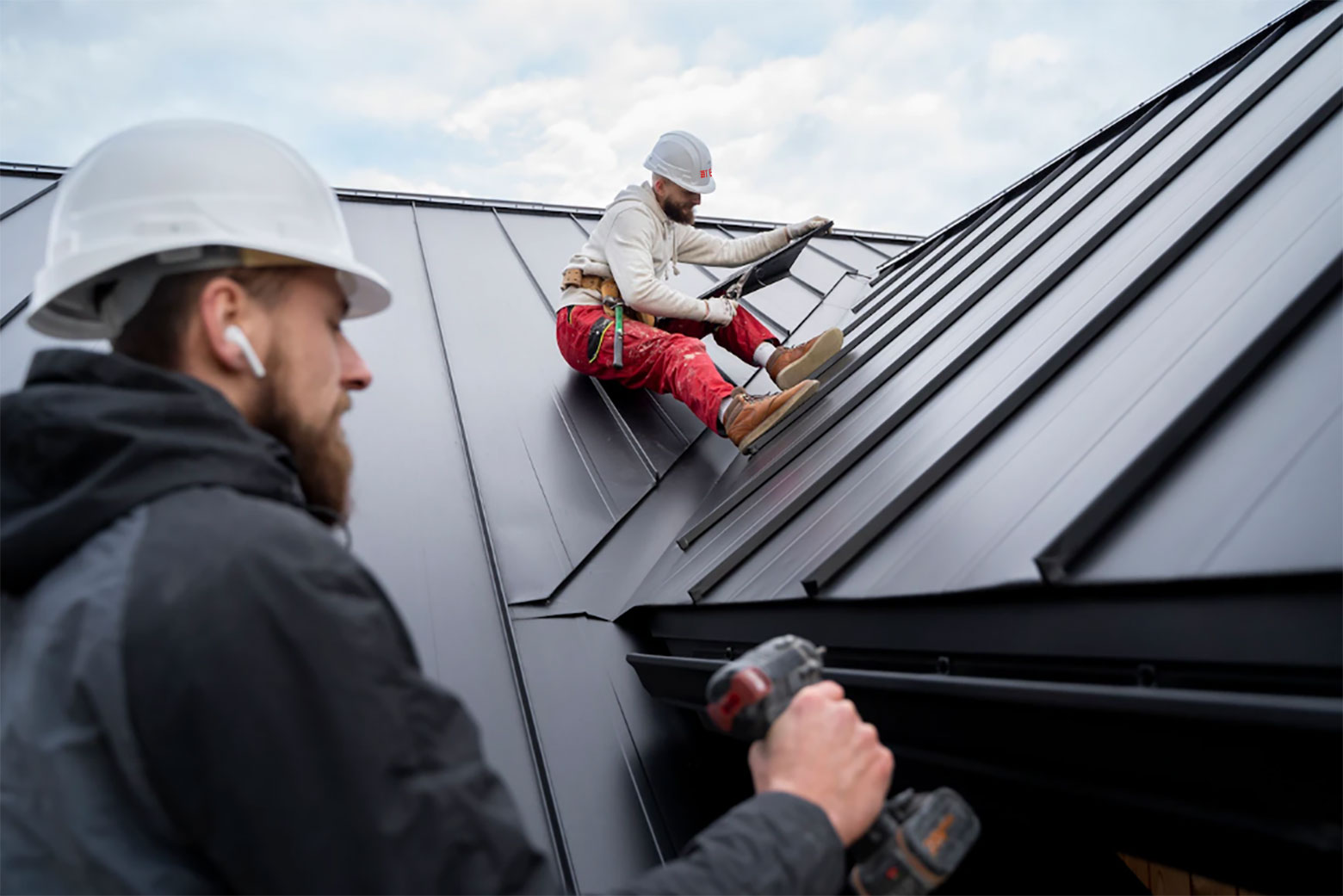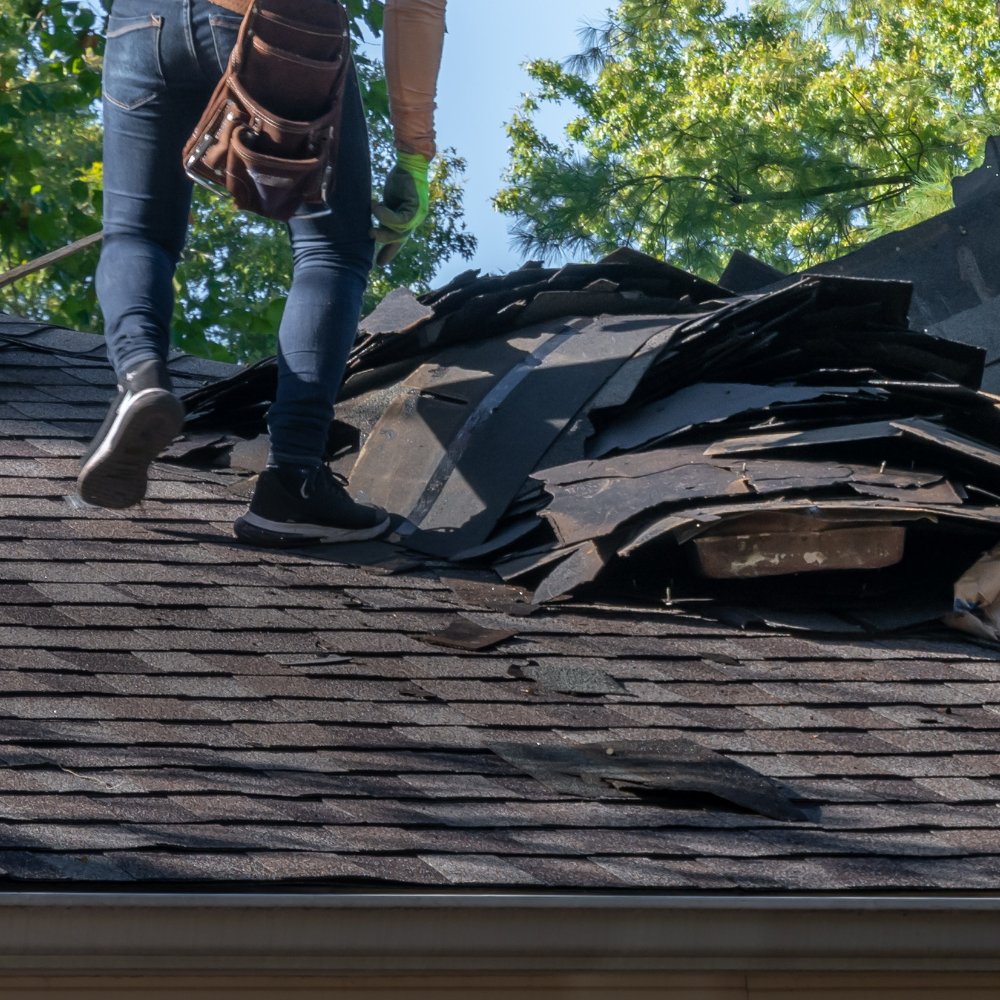Comprehending the Different Kinds Of Roofings: A Comprehensive Overview for Homeowners
In the realm of homeownership, selecting the suitable roof covering design is a decision that lugs considerable implications for both performance and aesthetic charm. With a variety of alternatives-- ranging from the traditional gable to the modern flat-- each kind provides one-of-a-kind benefits and challenges that should line up with the property owner's ecological factors to consider and particular needs. Comprehending these distinctions not just aids in making an informed selection yet likewise affects long-term maintenance and power effectiveness. As we discover the ins and outs of numerous roof types, it ends up being evident that one dimension does not fit all; the ideal choice may stun you.
Gable Roofs
Saddleback roofs, characterized by their triangular form, are among the most preferred roofing styles as a result of their simpleness and efficiency in losing water and snow. This layout includes 2 sloping sides that meet at a ridge, permitting for effective drain and minimizing the risk of water buildup. The steep pitch typically related to saddleback roofs boosts their ability to manage heavy rainfall, making them appropriate for various environments.
Along with their sensible advantages, gable roofing systems supply visual convenience. They can be adjusted to different building designs, from typical to modern homes. The layout can also suit additional features such as dormer windows, which improve all-natural light and air flow in the attic space.
In addition, saddleback roofs offer sufficient space for insulation, adding to energy performance. House owners can select from a range of roofing products, consisting of asphalt roof shingles, steel, and tiles, better improving modification choices.
Despite their benefits, gable roof coverings may need extra support in locations vulnerable to high winds or heavy snowfall. Generally, the saddleback roof remains a popular option because of its mix of performance, sturdiness, and aesthetic charm.
Flat Roofs
Level roof coverings are commonly identified for their minimalist design and useful applications, particularly in industrial and industrial settings (oahu roofing). These roof coverings include a nearly straight or horizontal surface area, which enables easy building and versatile area usage. While they may lack the visual allure of pitched roofs, level roofings use countless advantages, particularly in urban atmospheres where maximizing space is vital
One of the key benefits of flat roof coverings is their availability. House owners can make use of the roof area for different functions, such as roof yards, terraces, or photovoltaic panel setups. Furthermore, level roofings are normally a lot more affordable to maintain and install contrasted to their sloped equivalents, as they need less materials and labor.
Nevertheless, level roofing systems do existing specific challenges. Proper water drainage is necessary to protect against water pooling, which can lead to leaks and structural damage. Hence, selecting top notch waterproofing materials and regular evaluations are crucial for guaranteeing durability. Common materials utilized for flat roofings consist of built-up roof covering (BUR), customized asphalt, and single-ply membrane layers, each offering distinctive benefits. Generally, flat roof coverings work as a useful and versatile choice for many home owners and companies alike.
Hip Roofs
Hip roof coverings are identified by their sloped sides that assemble on top, developing a ridge. This design is distinctive from gable roof coverings, as all four sides of a hip roofing system incline downwards towards the walls, giving a much more secure structure. The angle of the slopes can differ, enabling adaptability in building visual appeals and capability.
Among the main benefits of hip roofs is their capability to stand up to hefty winds and damaging climate condition. The sloped surface areas allow better water drain, reducing the danger of leaks and water damages. In addition, hip roofs use raised attic room, which can be used for storage space and even converted right into livable locations.
However, constructing a hip roof can be a lot more intricate and pricey than simpler roof covering kinds, such as gable roofing systems. The added product and labor associated with developing the slopes and ensuring correct architectural honesty can result in higher expenditures. In spite of these drawbacks, lots of house owners prefer hip roofings for their resilience, visual appeal, and potential for power performance.
Mansard Roofings
Mansard roof coverings, often identified by their special four-sided design, feature two slopes on each side, with the lower incline being steeper than the top. This architectural style, stemming from France in the 17th century, is not only visually appealing but practical, as it makes the most of the useful area in the upper floors of a building. The steep reduced incline permits for more clearance, making it an excellent option for lofts or attic rooms, which can be exchanged living areas.
Mansard roofings are defined by their flexibility, suiting numerous building styles, from conventional to modern-day. They can be constructed with various materials, consisting of asphalt shingles, slate, or steel, giving home owners with a range of choices to suit their spending plans and preferences. Additionally, the layout enables the integration of dormer home windows, enhancing all-natural light and air flow in the top levels.
However, it is vital to take into consideration the prospective downsides. Mansard roofing systems may require more maintenance as a result of the intricacy of their design, and their steep slopes can be testing for snow and rainfall runoff. On the whole, mansard roofing systems integrate elegance with practicality, making them a preferred choice among home owners seeking distinctive architectural functions.
Shed Roofings
As property owners significantly seek simpleness and performance in their architectural layouts, shed roofs have become a popular selection. Identified by a solitary sloping airplane, a shed roof covering presents a minimalist aesthetic that matches numerous home styles, from contemporary to rustic.
Among the primary benefits of a shed roofing is its straightforward building, which usually converts to decrease labor and material prices. This design enables effective water drainage, minimizing the threat of leakages and water damage. Additionally, the browse around these guys upright slope supplies enough area for skylights, enhancing natural light within the interior.
Shed roofing systems additionally offer convenience in regards to use. They can be effectively integrated right into enhancements, garages, or outdoor structures like pavilions and sheds. In addition, this roof covering style can suit various roof covering materials, including metal, asphalt shingles, or also eco-friendly roofs, lining up with eco-friendly campaigns.
Nevertheless, it is necessary to think about regional environment problems, as heavy snow lots may demand changes to the roof covering's angle or framework. On the whole, shed roofing systems offer a functional and aesthetically pleasing alternative for house owners seeking to maximize performance without compromising design.
Conclusion


Gable roofings, identified by their triangular shape, are Source among the most prominent roof covering styles due to their simplicity and effectiveness in shedding water and snow. oahu roofing. The high pitch typically connected with gable roofing systems improves their capability to manage heavy rainfall, making them suitable for different climates
While they may lack the aesthetic allure of pitched roof coverings, flat roofing systems provide numerous benefits, particularly in city settings where maximizing room is important.
